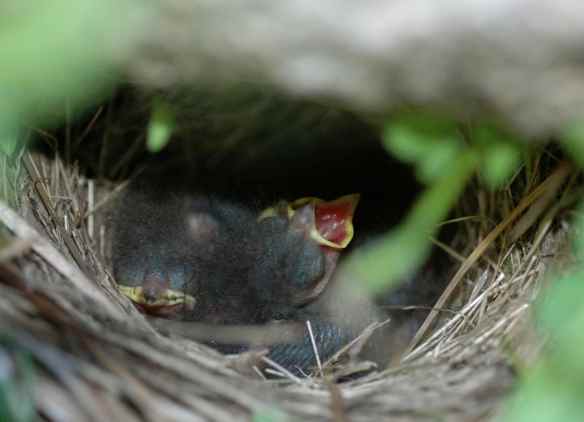Despite pop culture’s image of the scientist as solitary genius, hidden away in his office surrounded by old coffee cups and rat mazes, with escaped fruit flies whirring around his head while theories fizz in his lonely brain, scientists can be quite social. Networking is important in science: it’s how you get jobs, find collaborators, and see new ways to think about your data. (Of course, the networking you’re doing is with other scientists, so escaped fruit flies may still be involved.) This week I’m attending the conference of the International Society for Behavioral Ecology in order to do just that, and the prospect of networking myself has made me think of other animals who network and the benefits they get from it.
Monthly Archives: July 2014
Scarce bycatch
There has been surprisingly little bycatch this year: we’re more than halfway through the field season and so far we’ve only had two non-juncos fly into our nets. As usual, we took some photos of them and then released them.
Green-tailed Towhee
Juncos underground
Juncos nest on the ground (usually; sometimes they will nest higher, even reusing old robins’ nests, but I’ve never seen this myself. It’s probably because I’m short). This makes their nests tricky to find, since in the first place, there is a lot of “the ground” to search, and in the second place, you have to be really careful where you step while you search.
They don’t just nest on the ground, though: they often hide their nests underneath things. Some of them are quite good at it.
“Keep doors closed…”
More animal higgledy piggledy
The higgledy piggledy poems return… (The first higgledy piggledy post is here.) Once again I have not quite followed all the rules.
————————————–
Parental care
Tentacled vermiform
mother caecilian
what simple kindness your
offspring must lack:
Un-altruistically
cannibalistically
eating their mama’s own
skin for a snack!
Caecilians are a kind of amphibian. Some caecilians feed their babies by growing a special layer of skin that the babies then eat. (Hey, is it really any weirder than what we mammals do to feed our babies?) All caecilians have little tentacles on their faces. See, goofy poetry is so educational!







